Description
Name in North American Boletes: N/A
Genus: Xerocomellus
Species: bolinii
Common Name: Jason’s Bolete (after the discoverer, Jason Bolin, who in turn named the species after his grandfather Franklin Bolin).
Tells: Blue bruising flesh is creamy in the cap & yellow/orange in the stem. Yellow pores age darker & quickly bruise blue. Long, white/yellow stem gets red/brown lower down.
Other Information: Stem may have vertical lines. Stem pinches at the base. Pinkish-brown, blue-bruising cap often cracks to show white flesh. The cap edge holds its incurved margin until old. Cap flesh can have yellow tones. Stem often has vertical lines, but never netting. White mycelium. Likes sandy soil near oak & pine.
Science Notes: A new species first published in 2021 based on finds in Florida. A Texas find has also been confirmed.
Edibility: Good.
CHEMICAL TESTS:
- NH4OH (Ammonia): Cap & stem surface turns light green, fading to yellow. Cap flesh turns pale orange.
- KOH: Cap, stem, and flesh all turn orange or amber, fading to brown.
- FeSO4 (Iron Salts): Cap & stem surface turns light green (for young specimens) or light brown (older specimens). Flesh turns lemon yellow or olive.
Links:
 |
0 |  |
0 |  |
0 |  |
0 |

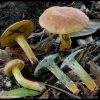
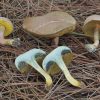
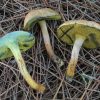
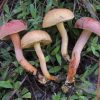
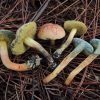

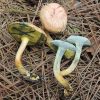

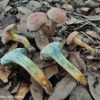

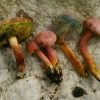

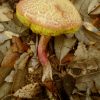
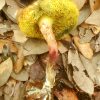
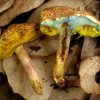
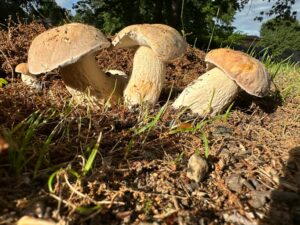
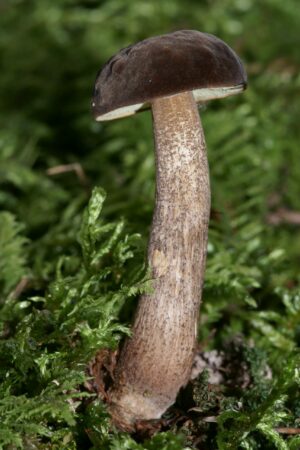

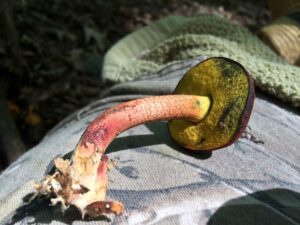
Got something to discuss?